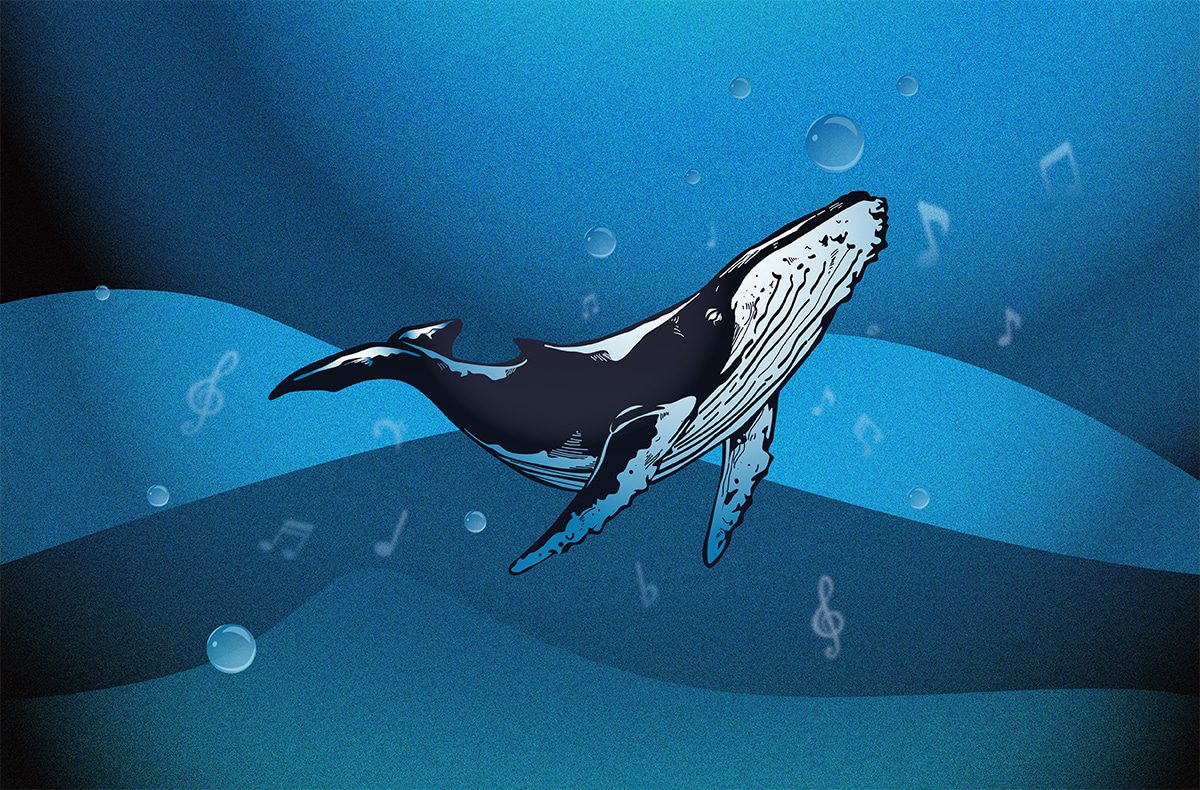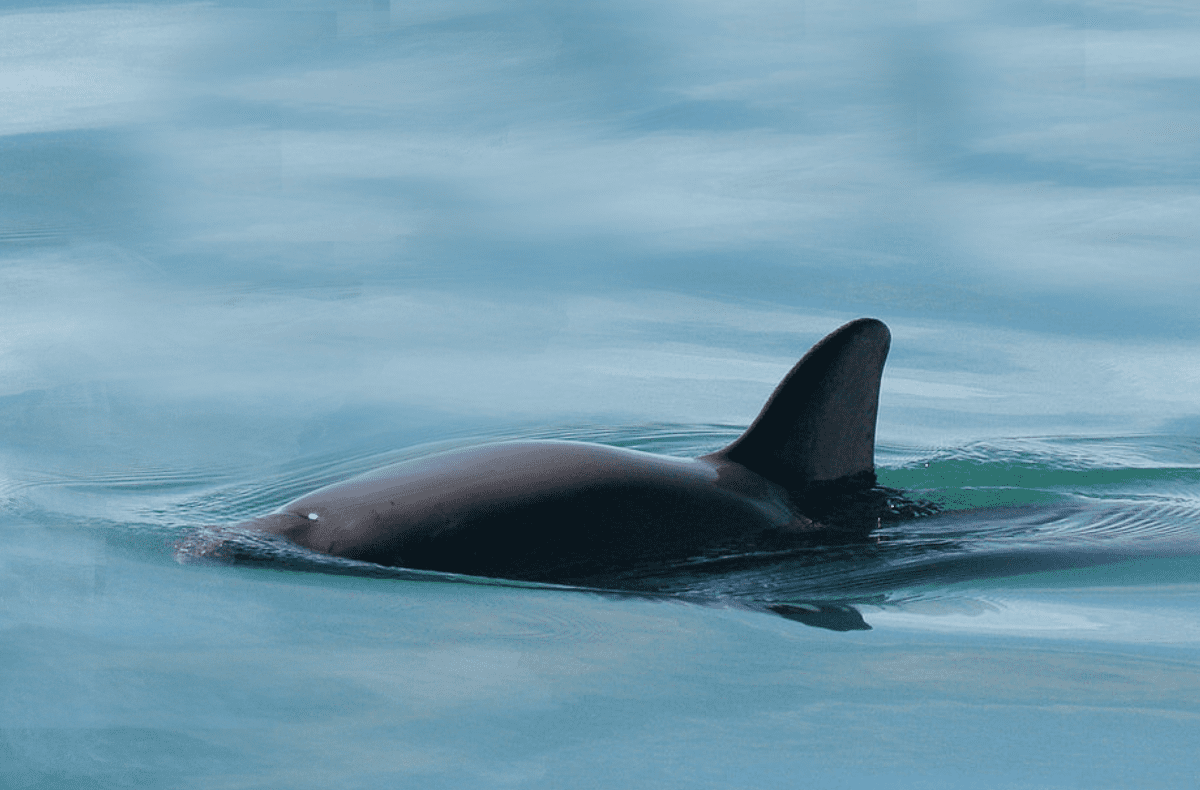
In 1970, bioacoustician Roger Payne released an album of humpback whale songs that introduced mankind to the mysterious and haunting acoustic world of our planet’s largest residents. In the decades since, we have mostly ceased hunting whales and begun to study their songs, but new discoveries raise new questions: Why do they sing? Do whales have a language? Do they have culture?
I would like to pose another important question: What if whales are asking us to shut the fuck up?
Maybe it’s uncharitable to assume that a whale would be so rude. By all accounts, we are the more obnoxious species. Our quest to decipher whale’s noises—portrayed elegantly in the 2021 documentary Fathom, a must-watch for whale lovers—is in its earliest stages, but one thing is already clear: The noise pollution from human shipping makes it harder for whales to hear each other. So even if they’re not asking us to pipe down, they’re almost certainly thinking it.
Cetaceans (whales, dolphins, and porpoises) evolved from even-toed ungulates, making them close relatives of the somewhat-less-enigmatic hippopotamus. When these ungulates eschewed the land for the sea (fifty-some million years before it was cool), things got weird.
Whales evolved into the largest beings on Earth, growing enormous brains that are different from other mammals’, and more complex. Whales’ limbic systems, the regions of the brain related to emotion, community, and the self, are more developed than ours, leading scientists to theorize that whales are socially and emotionally more sophisticated than humans.
To put it bluntly, the inner life and social life of a whale are likely much more interesting than mine or yours. Which means the noise from our ships could disrupt and irritate them on levels we can’t even comprehend.
Whales’ sense of sight is much poorer than ours, but their ears are much better, and cetaceans can see with their ears. Dolphins’ hearing is so precise that they can not only detect other animals around them, but form a mental image of that animal’s internal anatomy. Their relatives, the whales, also echolocate, emitting an astounding variety of notes and waiting minutes for the noises to bounce back so they can form an internal map of the ocean around them. Imagine being legally blind, but with a brain and a set of ears so powerful that you could picture the entire city around you, in detail, by walking down the street and humming.
Unlike mammals, whales don’t breathe as they vocalize, because breath is at a premium. They lack vocal chords, but are capable of making enormous soundwaves—a single one could be the length of a football field—by squeezing pockets of air back and forth inside their bodies. If whale songs remind you of the sounds your digestive system makes after a filling meal, this is why. When these soundwaves aren’t bouncing off undersea mountains or passing swarms of feckless krill, they can travel for over a thousand miles. What may look to us like a lonely whale, singing achingly into the empty sea, could actually be a participant in a conversation far too wide-ranging for humans to hear.
Because of this great distance, that conversation is probably not linear. In the vastness of the ocean, it could take dozens of minutes for one whale’s song to reach another whale. Unlike us, whales are constantly hearing noises from the past as well as from the present, meaning that their concept of time is likely quite different from ours. Imagine yourself, blind and echolocating, capable of shouting to friends so far away that it could take half an hour for you to greet each other. A back-and-forth conversation would be difficult.
That may be why whales communicate through song. Male blue and humpback whales produce notes and phrases over and over in patterns that resemble song verses, repeating them in what sounds like a song. Written out, these patterns read like sheet music. Watch a visualization for a few minutes and you’ll notice that whale songs have choruses (and I think I noticed a bridge around 6:20). This structure, researchers believe, implies that whales have syntax, a set of rules governing communication that allows for an exchange of ideas far more complex than “Anyone there?” or “Krill here!”
This sounds like our concept of music, with one mind-blowing exception: They have no beginning or end. Whales will pick up a song and repeat it for hours at a time, but there’s no count-off at the beginning, no crescendo signaling the end.
Whales don’t just sing songs, they learn them from other whales. And according to Dr. Ellen Garland, one of the scientists profiled in Fathom, that sharing happens on a societal level. New songs emerge and pass from whale-to-whale, moving West to East, with singers sometimes improvising or incorporating them into old songs. All the males inhabiting a given region sing the same song, and when a new song reaches them, the entire population can learn it. According to Dr. Garland, this practice is not just evidence of whale culture, it is culture.
Our species is roughly 2 million years old, and our capacity for culture is younger. Whales first appeared 50 million years ago, and have presumably been communicating for much of that time. We still have no idea what they’re communicating about. We can only guess at the depths of their feelings and their relationships. What we do know is that whales are on a never-ending journey through the seas, a dim world where “before” and “now” can be the same, singing circular and intricate songs which, for whatever reason, are so important that entire populations will memorize them, personalize them, and pass them on.
That’s what we’ve been driving our noisy container ships through for the last hundred years. The author of Beowulf referred to the ocean as the “whale-road,” but today it’s more like the Brooklyn-Queens Expressway than something from an epic poem. With the rise of the combustion engine, and the ensuing explosion of global trade, the number of ships in the seas rose precipitously in the 20th Century. As Ed Yong points out in his recent book, An Immense World, this meant an unprecedented rise in noise pollution. Undersea noise levels have risen 30 decibels since the invention of the propeller, increasing sharply with the rise of massive container ships. As of 2021, no fewer than 5,500 container ships crisscrossed the oceans, their massive diesel engines polluting not only the air but also the acoustic world beneath them. Depressingly, Yong notes that some whales live for over a century. That means that there are, at this very moment, gargantuan beings of great emotional depth, who have spent their lives singing to an ever-shrinking audience, increasingly drowned out by white noise from our ships.
When you think about it, we’re lucky that whales aren’t actively seeking revenge, which seems like more of an orca thing. But given what we know, we would be wise to cut out our infernal racket before we further anger the world’s largest and quite possibly most intelligent inhabitants. By giving whales the space to communicate as they have for thousands of years, we will also give our scientists the chance to study whale communication in its truest form. Dr. Michelle Fournet, also profiled in Fathom, appears to have made first contact with whales by playing their greetings back to them and receiving a call in return. The conversation she started could teach us things we can’t yet imagine.
While we can’t shut down the global shipping fleet overnight, we can build quieter, greener engines, and hopefully eventually pivot to blimps. And while we can’t yet speak with whales, we can enshrine their basic right to live undisturbed in our laws, end whale hunting, and begin to treat cetaceans like the brilliant and complicated beings they are. We have a long way to go, and much to apologize for, but giving them a bit of peace and quiet would be a great start.



